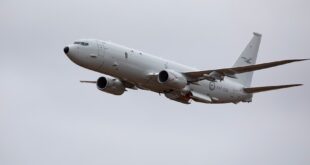Flight Critical: Drones, Cyber Security and Critical Infrastructure, a collaboration between the Cyber Security Cooperative Research Centre (CSCRC) and Omni, found despite their rapid proliferation and increasing use in critical infrastructure applications, there are no national regulations or standards related to the cyber security of drones, also known as unmanned aerial vehicles (UAVs).
As the use of UAVs – which are often internet connected devices – becomes commonplace across the economy, it is vital cyber security guidance or standards are implemented as a priority. With significant reforms to Australia’s Security of Critical Infrastructure Act 2018 (SOCI Act) now in force and amendments being developed, there is clear need to address UAV cyber threats as part of an ‘all hazards’ risk approach.
CSCRC CEO Rachael Falk said UAVs could be exploited by malicious cyber actors to steal data, gain insights into critical infrastructure operations and for disruption. “The rise of sophisticated UAV technology has the potential to become a game changer in Australia, driving new efficiencies and improving worker safety,” Falk said. “However, they are vulnerable to cyber attack, which is especially concerning in relation to their critical infrastructure applications. This means clear guidance regarding UAV cyber security is required to help Australian critical infrastructure operators mitigate UAV- related cyber threats.”
The growth of UAVs has been rapid, with estimations the global market will hit more than $67 billion by 2029 and units produced set to grow from 2 million in 2021 – to 6.5 million in 2030.
Omni General Manager Luke Easey, said as UAV technology continues to evolve, these devices are becoming increasingly sophisticated, fitted with state-of-the-art sensors, cameras and image processing software producing more efficient and accurate data.
“UAVs will play an increasing role in ensuring Australia’s critical infrastructure keeps providing the services we all rely upon. Therefore, it makes sense that security is a top priority,” Easey said. “Providing clear guidance to critical infrastructure entities about UAV cyber security is an easy way to educate them about potential threats and ultimately mitigate against UAV-related cyber threats, which will benefit all Australians.”

For Editorial Inquiries Contact:
Editor Kym Bergmann at [email protected]
For Advertising Inquiries Contact:
Director of Sales Graham Joss at [email protected]

 Unmanned Aerial Vehicle The latest drone news
Unmanned Aerial Vehicle The latest drone news




